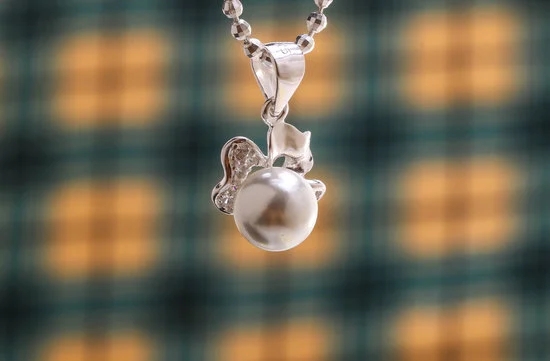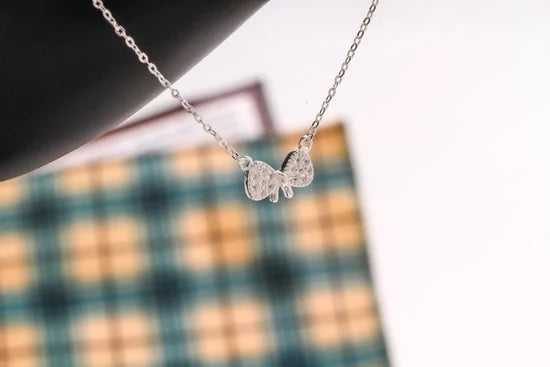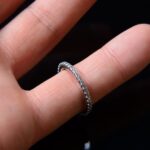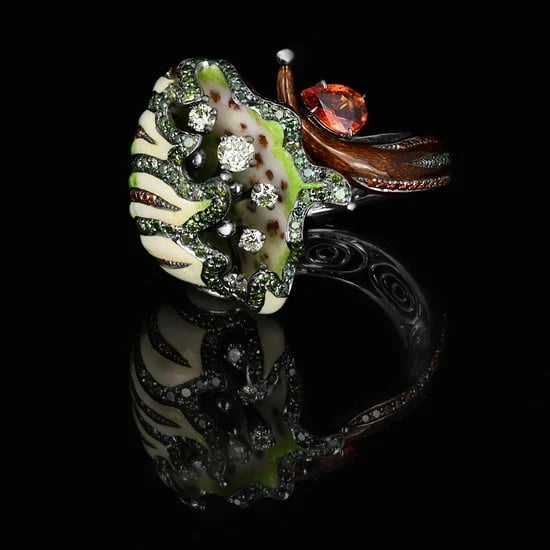Crystals have captivated humans for centuries with their stunning beauty and mystical properties. From amethysts to quartz and everything in between, crystals are not only coveted for their aesthetic appeal but also highly valued for their metaphysical properties. One popular way to showcase the allure of crystals is by incorporating them into jewelry designs. However, creating crystal jewelry often requires drilling holes in the stones, a process that can seem intimidating to beginners.
In this article, we will guide you through the fascinating world of drilling holes in crystals for jewelry making. Whether you are a seasoned jewelry designer or a curious enthusiast looking to explore a new craft, we have you covered. We will delve into different types of crystals and their unique properties, discuss the importance of drilling holes in crystals for jewelry making, and provide step-by-step instructions on how to do it successfully.
Before diving into the technical aspects of drilling, it is essential to familiarize yourself with the tools and materials necessary for this process. From diamond-tipped drill bits to protective goggles and clamps, we will walk you through all the essential equipment needed for safe and effective crystal drilling. Additionally, we will cover how to properly prepare your crystals before drilling, including cleaning them thoroughly and protecting them from damage.
So whether you want to create crystal earrings that catch the light or design an intricate crystal necklace, mastering the art of drilling holes in crystals is crucial. In our step-by-step guide section, we will break down each stage of the drilling process so that even beginners can achieve professional results. We will also address common challenges encountered when drilling crystals and provide troubleshooting tips to help overcome them.
Join us as we embark on a journey into the world of crystal jewelry making. Learn how to transform raw gemstones into exquisite pieces that showcase both their natural beauty and your artistic vision. With our comprehensive guide, you too can embrace this captivating art form and create stunning jewelry creations that are truly one-of-a-kind.
Understanding Crystals
Crystals are not only beautiful and captivating, but they also hold unique properties that make them highly sought after in the world of jewelry making. Understanding the different types of crystals and their specific properties is crucial when it comes to drilling holes in them for jewelry.
There are various types of crystals used for jewelry making, each with its own characteristics and qualities. One common type is quartz crystals, which come in a wide range of colors such as clear, rose, smoky, and amethyst. Quartz crystals are known for their clarity, hardness, and durability, making them ideal for drilling and creating stunning jewelry pieces.
Another type of crystal commonly used is agate. Agate is a form of chalcedony that features unique banding patterns and a variety of colors. This stone is valued for its smoothness and ability to take on a high polish, which makes it perfect for drilling intricate designs and shapes.
Other popular crystals used in jewelry making include amethyst, turquoise, lapis lazuli, and jasper. Each crystal has its own distinct appearance and set of properties, such as hardness and color variations, which can influence the drilling process.
Understanding the properties of different crystals is essential when it comes to choosing the right tools and techniques for drilling holes. Some crystals may require special care or slower drill speeds to prevent damage or fractures during the drilling process. By familiarizing yourself with the specific properties of each crystal type, you can ensure successful hole drilling while preserving the integrity of these valuable gemstones.
- Quartz: Known for its clarity, hardness (7 on Mohs scale), durability.
- Agate: Features unique banding patterns; takes on a high polish.
- Amethyst: A purple variety of quartz; commonly used in beads.
- Turquoise: Known for its blue-green color; relatively soft (5-6 on Mohs scale).
- Lapis Lazuli: Deep blue stone with golden pyrite flecks.
- Jasper: Variety of colors and patterns; often used in beads and pendants.
The Importance of Drilling Holes in Crystals for Jewelry Making
Crystal jewelry is highly sought after for its beauty and versatility. From elegant necklaces to delicate bracelets, crystals add a touch of glamour to any outfit. However, in order to incorporate crystals into jewelry designs, it is often necessary to drill holes in them. This section will discuss the importance of drilling holes in crystals for jewelry making.
Drilling holes in crystals is crucial for creating unique and personalized pieces of jewelry. It allows for the attachment of clasps, jump rings, or wire connectors that enable the crystal to be incorporated into various designs. By drilling holes in crystals, jewelry makers have the freedom to experiment with different techniques and styles.
Another important reason for drilling holes in crystals is to enhance their natural beauty and properties. Crystals are known for their energy-enhancing abilities and spiritual properties. By drilling holes in them, these properties can be further harnessed by wearing the crystal as jewelry. For example, a drilled crystal pendant can be worn close to the heart chakra for emotional healing.
In addition, drilling holes in crystals opens up opportunities for more intricate designs and patterns. Beads made from drilled crystal create stunning visual effects when combined with other beads or metals. They can also be used as pendants or charms on necklaces and bracelets, adding an element of interest and uniqueness to the overall design.
To summarize, drilling holes in crystals is a vital step in the process of creating beautiful and meaningful crystal jewelry. It allows for customization, enhances the natural properties of the crystal, and offers endless possibilities for creative expression. Whether you are a beginner or an experienced jewelry maker, mastering the art of drilling holes in crystals will undoubtedly take your creations to new heights.
| Benefits | Examples |
|---|---|
| Customization | Attaching clasps or wire connectors |
| Enhancing Properties | Wearing crystal close to heart chakra for emotional healing |
| Creative Expression | Intricate designs and patterns using drilled crystal beads |
Essential Tools and Materials Needed for Drilling Holes in Crystals
Drill
The most important tool you will need for drilling holes in crystals is a high-quality drill. It is recommended to use a handheld rotary tool with a diamond-tipped drill bit specifically designed for drilling through hard materials like crystal. These drill bits are usually available in different sizes, so make sure to choose the appropriate size for the hole you want to create.
Safety Gear
Working with crystals and power tools can be hazardous, so it is crucial to prioritize safety. Wear protective goggles to protect your eyes from any debris that may fly off while drilling. Additionally, wear a dust mask or respirator to avoid inhaling any dust particles that may be released during the drilling process.
Lubricant
Using a lubricant while drilling can greatly reduce friction and heat build-up, prolonging the life of your drill bit and preventing damage to your crystal. Lubricants such as water, mineral oil, or beeswax can be applied directly on the surface of the crystal or poured into a shallow container where you dip the crystal periodically during drilling.
Supportive Materials
To ensure stability and prevent cracks or breakage in your crystals, it is essential to have supportive materials on hand. A soft cloth or towel can be placed underneath your crystal to act as a cushion and provide stability while drilling. Additionally, clamshell vise grips or adjustable clamps can be used to secure larger crystals during the drilling process.
Templates and Marking Tools
If you have specific designs in mind for your drilled crystal jewelry, templates can be incredibly helpful in achieving consistent hole placement and spacing. These templates can be made from thin cardboard or plastic sheets with pre-marked hole patterns. Alternatively, marking tools such as permanent markers or pencil can be used to indicate where you want to drill your holes. Just remember to choose a marking method that is safe for your particular crystal.
Extra Supplies
Lastly, don’t forget to have some additional supplies on hand to aid in the drilling process. These may include a small brush or toothbrush to clean away debris between drillings, a measuring tape or ruler for precise measurements, and sandpaper or a nail file for smoothing rough edges after drilling.
By ensuring you have all these essential tools and materials ready before you start drilling, you can make the process much smoother and more efficient, leading to stunning jewelry creations with minimal complications.
Preparing the Crystal
Before you begin drilling holes in crystals for jewelry making, it is essential to properly prepare the crystal. This involves cleaning the crystal, marking where you want to drill, and taking steps to protect the crystal during the drilling process.
1. Cleaning the Crystal:
Before drilling into a crystal, it is crucial to clean it thoroughly. Crystals often have natural oils or dirt on their surface that can interfere with the drilling process. To clean the crystal, start by gently wiping it with a soft cloth or brush to remove any loose debris.
Then, fill a bowl with warm water and mild soap, and carefully place the crystal into the soapy water. Use a soft toothbrush or Q-tip to gently scrub away any remaining dirt or oils. Rinse the crystal under clean running water and pat dry with a soft cloth.
2. Marking Where to Drill:
Once your crystal is clean and dry, mark where you want to drill using a washable marker or masking tape. This will make it easier for you to accurately drill your desired holes without any guesswork. Decide whether you prefer drilling at specific points on the crystal surface or creating patterns such as straight lines or curves.
3. Protecting the Crystal:
Drilling can sometimes create heat, vibration, or pressure that may damage fragile crystals. To protect your crystals from potential harm during drilling, consider using a support system such as a wooden block or piece of rubber padding underneath them. This will help absorb vibrations and prevent cracking or chipping of the crystals during drilling.
By following these steps to prepare your crystals before drilling, you can ensure that you have a clean surface ready for successful hole creation without causing damage to your prized gemstones.
Step-by-Step Guide
Drilling holes in crystals for jewelry making can be a delicate process that requires precision and care. However, with the right tools, materials, and techniques, you can create stunning drilled crystal beads to use in your jewelry designs. In this step-by-step guide, we will walk you through the process of drilling holes in crystals for jewelry.
Gather Your Safety Equipment
Before you begin drilling, it is important to prioritize safety. This includes wearing protective goggles to shield your eyes from flying fragments or shards of crystal. Additionally, consider wearing a dust mask to avoid breathing in any fine particles that may be released during the drilling process.
Choose the Right Drill Bit
Selecting the appropriate drill bit is crucial for successfully drilling holes in crystals. For softer crystals such as quartz or amethyst, a diamond-coated drill bit works well. However, for harder crystals like sapphires or rubies, a carbide or corundum drill bit may be more effective. Ensure that the drill bit is the correct size for the hole you want to create.
Create Lubrication and Stability
To facilitate drilling and prevent damage to the crystal, it is essential to create lubrication and stability during the process. One method is placing a small amount of water on the crystal’s surface where you intend to drill the hole; this will help reduce heat generated by friction during drilling. Additionally, using a clamp or vice grip to secure the crystal in place can prevent slipping or movement while drilling.
Start Drilling Slowly and Gently
Begin by applying light pressure on the drill bit against the crystal’s surface. Start drilling at a slow speed to ensure control and accuracy. It is important not to rush this step as sudden movements or excessive pressure can cause cracks or fractures in the crystal.
Continue to apply gentle pressure as you gradually increase the speed of the drill. Take breaks if necessary to prevent overheating the crystal. Be patient, as drilling through a crystal can take some time depending on its hardness and thickness.
Remember to always follow the manufacturer’s instructions for your specific drilling tool and exercise caution throughout the process. By following these steps, you will be able to create beautifully drilled holes in crystals that can be incorporated into your unique jewelry designs.
Troubleshooting Tips
While drilling holes in crystals for jewelry making can be a rewarding experience, it is not without its challenges. In this section, we will discuss some common challenges you may encounter when drilling holes in crystals and provide solutions to overcome them.
One common challenge is the tendency of crystals to crack or break during the drilling process. This can be especially frustrating when working with delicate or brittle crystals. To prevent this, it is crucial to use the right drill bit for your specific crystal.
Different types of drill bits are designed for different materials, and using the wrong one can increase the risk of damage. For example, diamond-coated drill bits are recommended for hard crystals like quartz or sapphire, while tungsten carbide bits work well for softer stones like amethyst or fluorite.
Another challenge that may arise is keeping the crystal stable while drilling. Without proper stability, the crystal may shift or slip, leading to uneven or crooked holes. To overcome this issue, consider using a clamp to securely hold the crystal in place during drilling. Additionally, placing a piece of rubber or foam underneath the crystal can provide stability and help absorb vibrations.
In some cases, you may encounter difficulties when removing drilled debris from the hole. If the debris becomes packed inside the hole, it can hinder further drilling and affect the final appearance of your jewelry piece. To solve this problem, periodically withdraw the drill bit from the hole while drilling to clear away any debris. You can also use compressed air or a small brush to clean out any remaining debris after drilling.
By being aware of these common challenges and their solutions, you will be better prepared to tackle any obstacles that arise as you drill holes in crystals for your jewelry creations. Remember that practice makes perfect and don’t get discouraged if you encounter setbacks along the way. With time and patience, you will become more skilled at overcoming these challenges and create stunning jewelry pieces with drilled crystals.
Finishing Touches
Once you have successfully drilled holes in your crystals for jewelry making, it is important to give them a polished finish and provide proper care to ensure their longevity. Polishing not only enhances the beauty of the crystals but also helps protect them from damage.
To begin with, you will need a few essential tools and materials for polishing your drilled crystals:
- Polishing Cloth or Microfiber Cloth: This soft cloth is perfect for gently wiping off any dust or debris from the surface of the crystal. Avoid using abrasive materials that may scratch the crystal.
- Jewelry Polishing Compound: This compound comes in different forms such as creams, pastes, or powders. It helps achieve a high shine on the crystal’s surface.
- Rotary Tool with Soft Buffing Attachment: A rotary tool with a soft buffing attachment or wheel can be used to polish your crystals. Make sure to select a low speed setting to avoid causing damage or overheating.
- Water Spray Bottle: Spraying water on the crystal while polishing can help prevent heat buildup and keep both the crystal and buffing attachment cool.
Before starting the polishing process, it is crucial to ensure that your drilled crystals are completely clean and free from any dirt or residue. Use mild soap and water to gently clean them, taking care not to apply too much pressure on the newly drilled holes.
Now, let’s move on to the step-by-step guide for polishing your drilled crystals:
- Attach the soft buffing attachment to your rotary tool, making sure it is securely fitted.
- Apply a small amount of jewelry polishing compound onto the buffing attachment.
- Turn on your rotary tool at a low speed setting.
- Gently press the buffing attachment against the surface of the crystal while moving it in circular motions. Take care not to apply too much pressure, as this may cause the crystal to crack or chip.
- Continue polishing until you achieve the desired shine and smoothness on the crystal’s surface.
- Once you have finished polishing, wipe off any excess polishing compound from the crystal using a clean cloth.
After polishing your crystals, it is important to store them properly to prevent scratches or damage. Keep them in a soft pouch or individual compartments to avoid contact with other jewelry pieces.
Creative Ideas
Once you have mastered the art of drilling holes in crystals for jewelry making, a world of creative possibilities opens up. Designing jewelry using drilled crystal beads allows you to create stunning and unique pieces that showcase the natural beauty and energy of crystals. In this section, we will explore some creative ideas to inspire your designs.
One simple yet elegant design idea is to string multiple drilled crystal beads onto a necklace or bracelet. You can choose beads of different shapes, sizes, and colors to create a striking contrast or opt for a more harmonious look by selecting beads with similar characteristics. The varying transparency levels and internal patterns of crystals add depth and visual interest to the piece. Experiment with different arrangements and combinations to find the perfect balance for your design.
Another creative way to incorporate drilled crystal beads into your jewelry designs is by using them as pendants. Simply attach a jump ring or bail to a single bead or a cluster of beads, and you have an eye-catching focal point for necklaces or earrings.
You can mix and match crystals that have complementary properties or select ones that align with specific intentions or energies you want to enhance. This not only creates visually appealing pieces but also infuses them with meaning and symbolism.
In addition to necklaces and earrings, there are countless other ways to use drilled crystal beads in your jewelry creations. For example, you can incorporate them into wire-wrapped designs by wrapping wire around the bead itself or building intricate frameworks around them.
They can also be used as charms on bracelets or anklets, adding a touch of sparkle and elegance. The options are truly limitless when it comes to designing with drilled crystal beads, so let your creativity soar and explore new possibilities in expressing yourself through jewelry-making.
Designing jewelry using drilled crystal beads allows you to harness the energy of these powerful gemstones while creating beautiful wearable art. Whether you prefer minimalist styles that let the crystals shine or intricate designs that showcase your craftsmanship, working with drilled crystal beads opens up a wealth of design possibilities.
Experiment with different shapes, colors, and arrangements to create jewelry pieces that not only look stunning but also resonate with your personal style and intentions. Let the natural beauty of crystals inspire you as you embark on your journey in designing jewelry using drilled crystal beads.
Conclusion
In conclusion, drilling holes in crystals for jewelry making is a skill that can unlock endless possibilities for stunning creations. By understanding the properties of different types of crystals and using the right tools and techniques, you can transform these natural wonders into wearable works of art.
The process of drilling holes in crystals requires careful preparation and attention to detail. From cleaning and marking the crystal to protecting it during drilling, each step is crucial in ensuring a successful outcome. Following a step-by-step guide can help beginners navigate through the process, while troubleshooting tips provide solutions for common challenges that may arise along the way.
Once the holes are drilled, it’s important to give your jewelry a finishing touch by polishing the crystal and providing post-drilling care. This will not only enhance its beauty but also prolong its lifespan. Additionally, experimenting with different designs and incorporating drilled crystal beads can lead to unique jewelry creations that showcase your creativity and style.
Drilling holes in crystals for jewelry making offers an opportunity to create one-of-a-kind pieces that reflect your personal taste and capture the beauty of nature. With practice and patience, you can master this art form and produce stunning jewelry creations that will be cherished for years to come.
Embrace the art of drilling holes in crystals and let your imagination soar as you bring these captivating gems to life through exquisite jewelry designs. Whether you’re a beginner or an experienced jeweler, exploring this technique opens up a world of possibilities for expressing your artistic vision and creating meaningful pieces that resonate with others. So go ahead, indulge in this enchanting craft, and witness the transformative power of crystals in your own hands.
Frequently Asked Questions
What is the best drill bit for drilling crystals?
When it comes to drilling crystals, the best drill bit to use is a diamond drill bit. Diamond is renowned for its hardness and durability, making it ideal for drilling through hard materials like crystals.
Diamond drill bits have tiny diamond particles embedded onto their tips, allowing them to easily cut through the crystal structure without causing damage or fractures. The use of a diamond drill bit ensures clean and precise holes in the crystals, making it the favored choice among professionals and enthusiasts in the field.
What do you use to drill holes in gemstones?
To drill holes in gemstones, jewelers and lapidary artists commonly use diamond-coated drill bits. These specialized drill bits are designed specifically for working with hard materials like gemstones.
Similar to diamond drill bits used for crystal drilling, these bits have diamond particles bonded onto their surface which aid in cutting through gemstone material efficiently. By using a rotary tool such as a flex shaft or a pendant motor with a diamond-coated drill bit at high speeds, artisans can effectively create smooth and accurately sized holes in gemstones without causing undue stress or damage to the precious material.
Can quartz crystal be drilled?
Yes, quartz crystal can be drilled through using appropriate equipment and techniques. Quartz is known for its hardness rating of 7 on the Mohs scale, which means that it requires strong tools to successfully penetrate its surface. Diamond-tipped drills are most commonly used to accomplish this task due to their superior hardness compared to quartz crystal itself.
When drilling into quartz crystal, it is important to apply constant pressure while maintaining proper speed and lubrication to prevent overheating or cracking of the material. With care and proper technique, it is possible to successfully create holes in quartz crystal without compromising its structure or aesthetics.

Welcome to my jewelry blog! My name is Sarah and I am the owner of this blog.
I love making jewelry and sharing my creations with others.
So whether you’re someone who loves wearing jewelry yourself or simply enjoys learning about it, be sure to check out my blog for insightful posts on everything related to this exciting topic!





